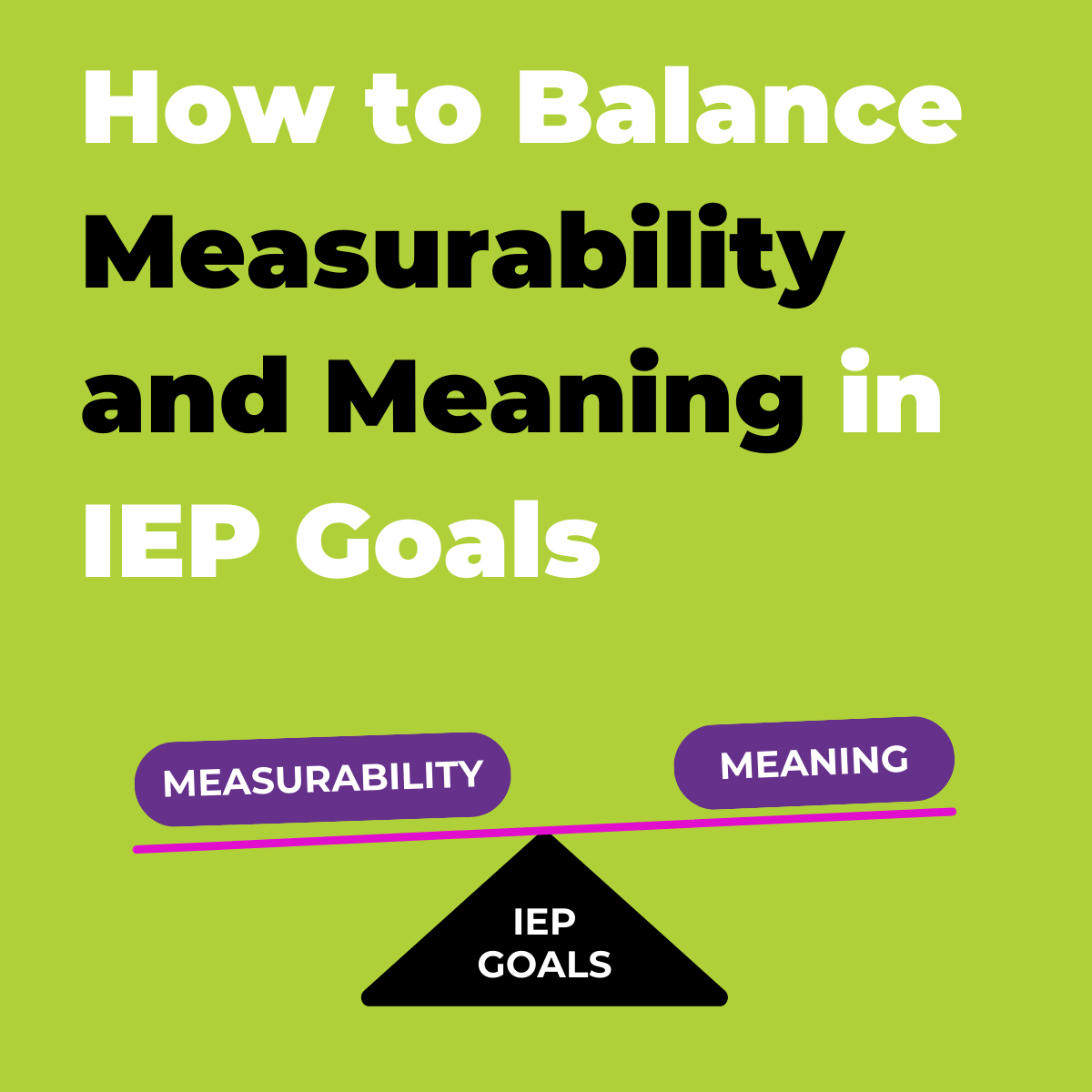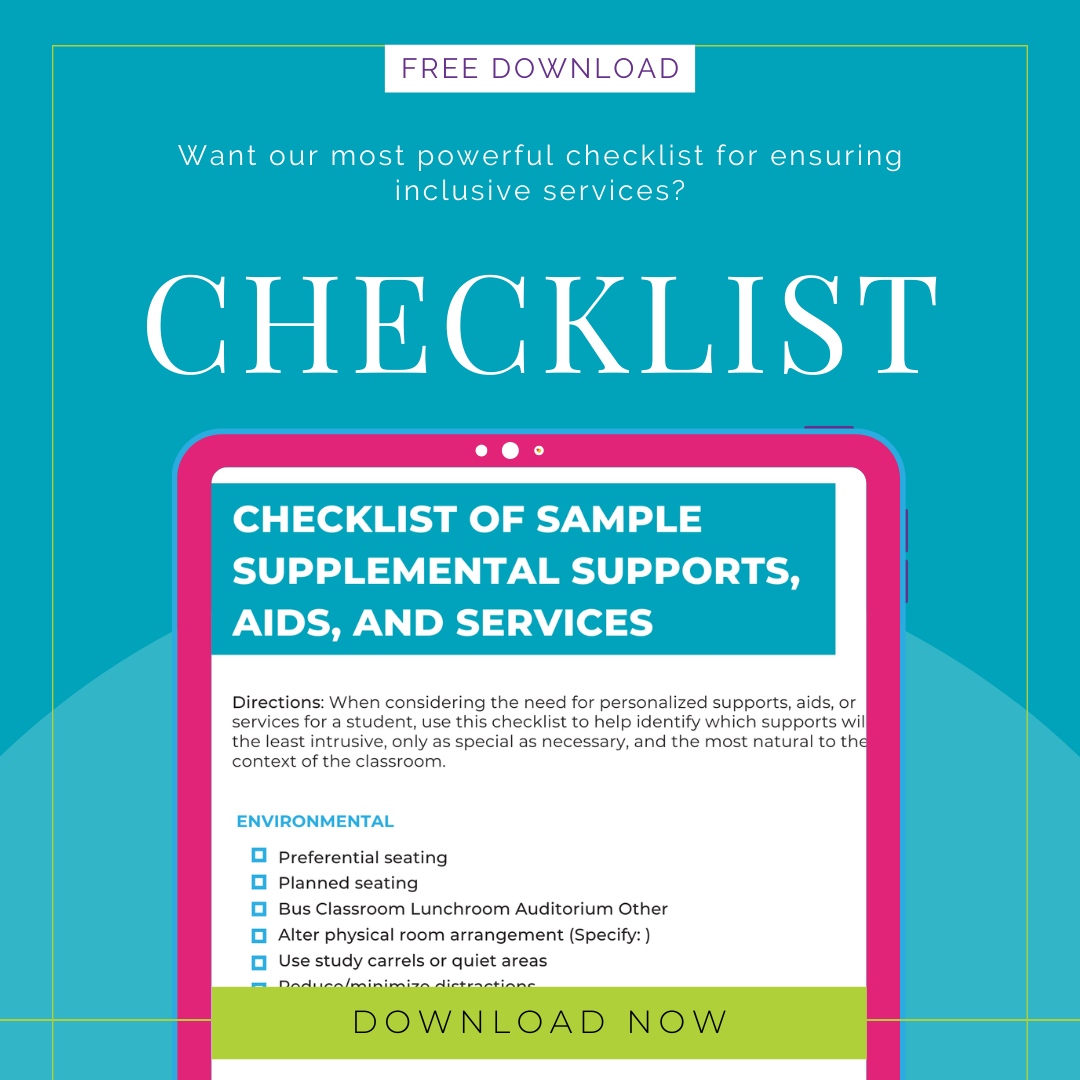How do you ensure IEP goals and objectives that are not only legally defensible, but meaningful to students and their families?
It seems like a lifetime ago, when at the University of Oregon, I asked a fellow doctoral student, “How do you know what criteria to write on a child’s IEP goal?” I was desperate to learn the secret to picking 4/5 vs. 2/3…
Know what my fellow doctoral student said?
You just mix it up!
Since that day, my quest for the secret to writing GOOD IEP goals has continued. I’ve read just about everything on the topic, conducted research studies, attended trainings, and still…I struggle.
I struggle with the paradox of measurable and meaningful goals.
As we all know, the more measurable the goal, the less we care about it. And the more we care about it, the harder it is to measure. A classic example is the goal that states a child will cross the street with 80% accuracy!
Bananas right?
Finding the balance between measurability has lead me to 3 things that will help make any IEP goal “better” and BONUS…leads to more inclusive educational opportunities!
#1: Know what it is you wan to see a student know or do?
Here are a few ways to check to make sure you have a clearly identified the “what” portion of the IEP goal:
-
Write the “what” in observable terms so team members can see/hear the “what”
-
Ensure the “what” is culturally and individually appropriate and is in the sweet “ZPD”
-
Be clear what the “what” is NOT (see example below)
Sample Goal Statement: During child led activities, when a familiar adult builds upon what the child said/did with or without the involvement of objects, the child will take any action (e.g., imitate adults verbalization/action, make a new motor verbalization/action) that serves to continue a back-and-forth exchange with the adult.
This sample is not about compliance…This sample is not about predetermined child response…This sample is not about single exchange; rather, the ideal would be to aim for three or more exchanges.
See how knowing “what” it isn’t…helps know “what” it is?
#2: Ensure expectations for the student's performance are clear.
In other words, make sure team members know if the child should do something more frequently, vs. more quickly, vs. with more accuracy, etc.
Here are a couple of ways to check to make sure your “what” is measurable:
-
Identify how many opportunities might occur throughout daily activities for the child to receive a complete learning trial related to the “what”
-
Develop a clear way to know how the child is responding to instructional efforts and when efforts should be modified
#3: Check back to make sure the “what” matters.
Here are a few ways to check to make sure your “what” matters:
-
The “what” increases a child’s access, participation, and progress in appropriate daily activities (aka the child needs the “what” most of the time or in many situations)
-
The “what” stems from a need that is because the child has an identified disability or delay
-
The “what” require specially designed instruction
Crafting impactful and legally defensible IEP goals for PreK-12 students is possible by emphasizing clarity, measurability, and importance. These three strategies are the key to developing IEP goals that truly matter and resonate with student needs.
FREE CHECKLIST:
Want our most powerful checklist for ensuring inclusive services?
- Effective strategies to try before even considering a pull-out setting
- Wildly expand your options for student support
- A must-have checklist for every IEP meeting!
- Get everyone thinking outside the box!
- Creative solutions to providing services and supports
- Finally, a common starting place for parents and educators


